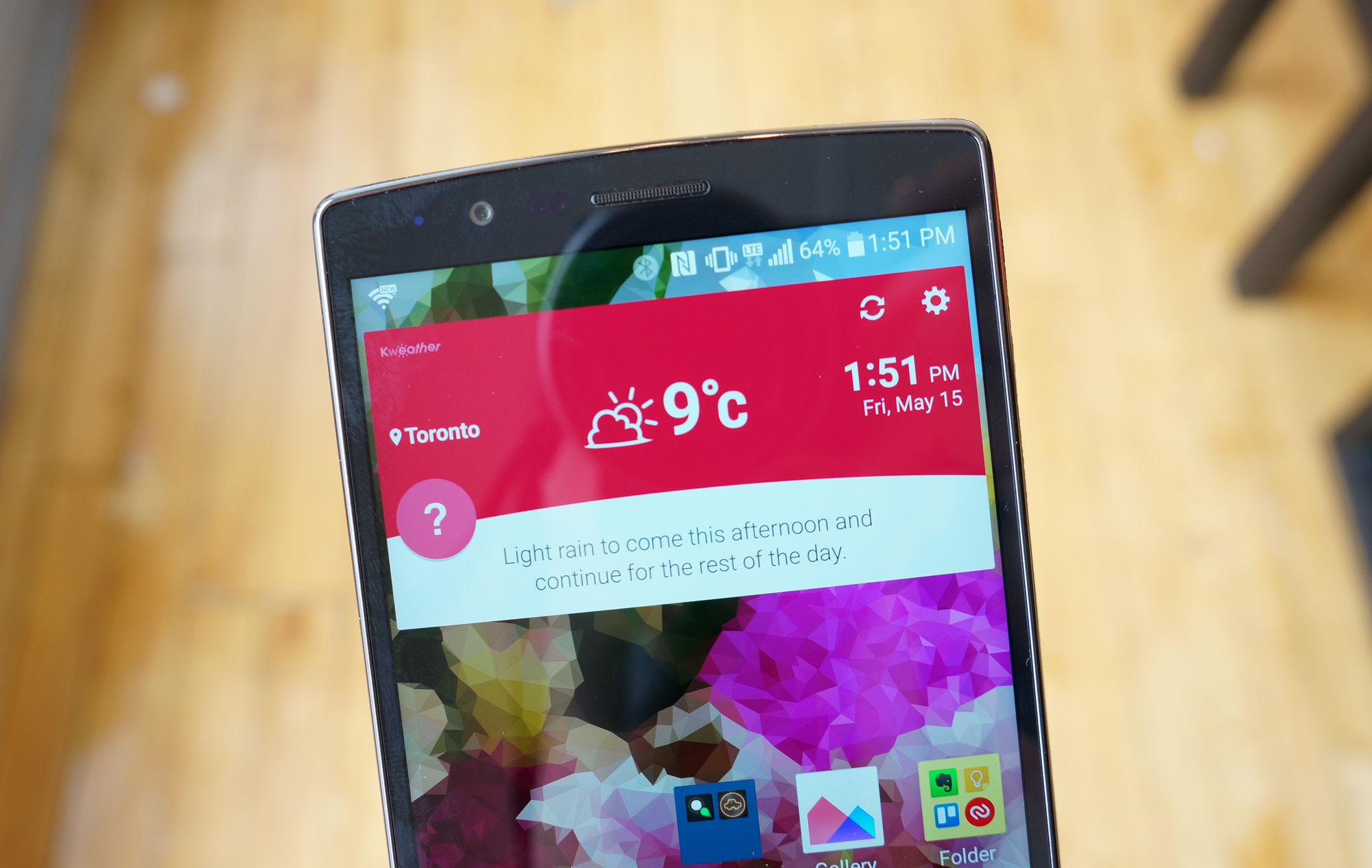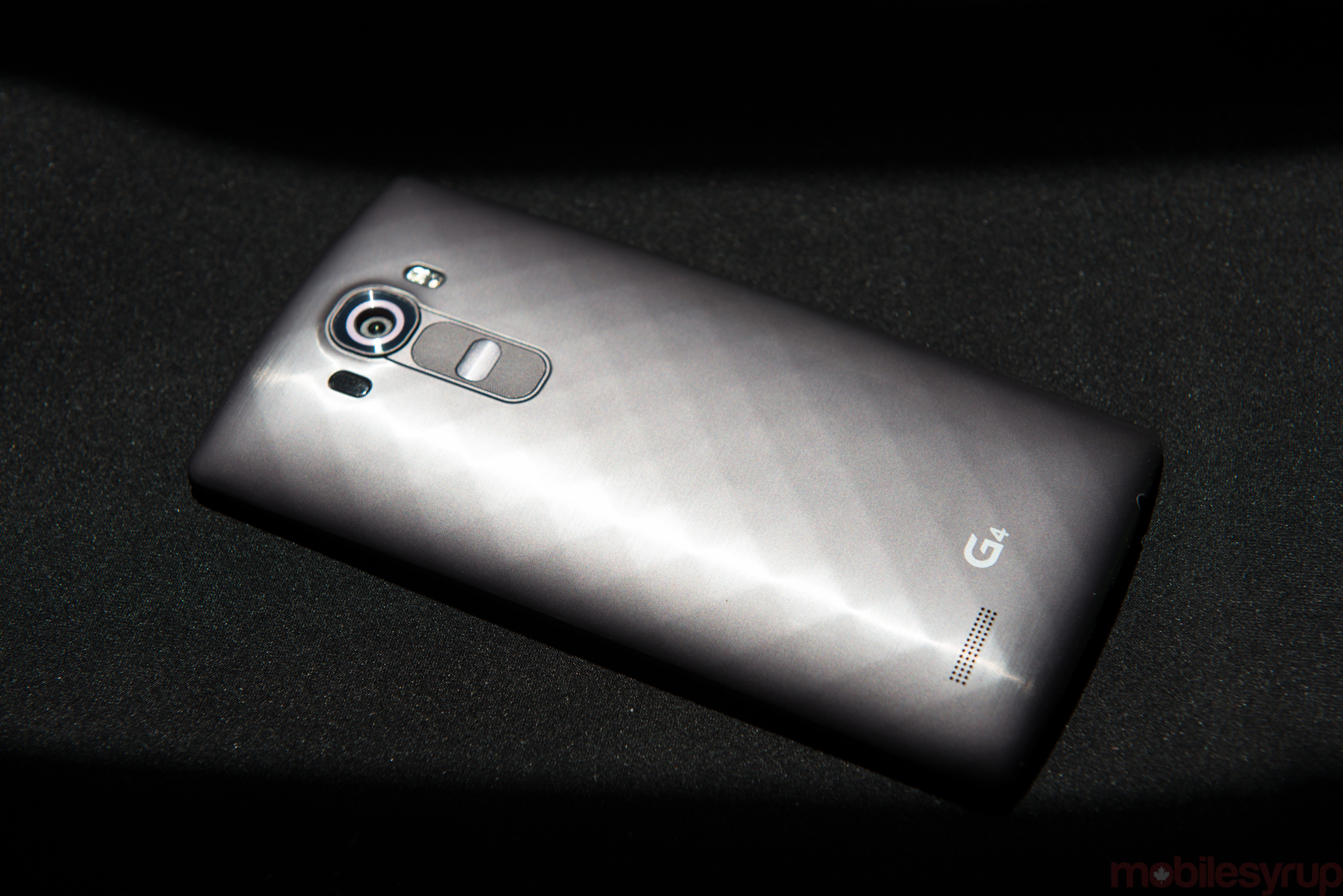
You know the gravity-invoking quip, “What goes up must come down?” So it is with the smartphone market. Samsung, once hailed as the unstoppable monster of the Android world, has ceded much of its momentum to upstarts like Xiaomi, while big names like Sony and HTC struggle to stay afloat.
Curiously, LG seems to have found a comfortable middle ground, steadily growing using innovations from elsewhere in its chaebol. Barring Samsung, no other manufacturer designs, engineers and builds as many of its smartphone components as LG, prizing this vertical integration over outside partnerships. LG and Samsung constantly appear at loggerheads, out-innovating one another in the areas of screen technology, battery composition and chassis materials.
With the G4, LG appears content to ride this wave for another year, iterating on its successful G3 with a better screen, faster internals and a much improved camera. Compared to the Galaxy S6, the G4 may seem particularly evolutionary (though we said the same about the excellent, boring Galaxy S5), but LG is using Samsung’s new design strategy to its advantage, appealing to the diminishing minority of hardcore Android users that value modularity over identity.
To Samsung, the Galaxy S6 was as much about perception as function; this is a company willing to sacrifice utility to make a better product, to disrupt compromise for the greater good of the brand. It worked; critics adored it.
With the G4, LG is saying the opposite: here’s a large phone with a hegemony built on trying to please everyone. While it doesn’t meet those lofty goals, it comes closer than I thought it could, and in doing so delivers one of the best smartphones of the year so far.
Specs
- Processor: Qualcomm Snapdragon 808
- Operating system: Android 5.1 Lollipop
- Display: 5.5-inch Quad HD IPS Quantum Display (2560 x 1440, 538ppi)
- Storage: 32GB eMMC ROM, microSD card up to 2TB
- RAM: 3GB LPDDR3 RAM
- Size: 148.9 x 76.1 x 6.3-9.8 mm
- Weight: 155 grams
- Rear camera: 16MP with F1.8 aperture / OIS 2.0
- Front-facing camera: 8MP with f/2.0 aperture
- Battery: 3,000 mAh removable
- Network: LTE / HSPA+
- Connectivity: WiFi 802.11ac / Bluetooth 4.1LE / NFC / USB 2.0
- Colours: (Ceramic) Metallic Gray / (Genuine Leather) Black
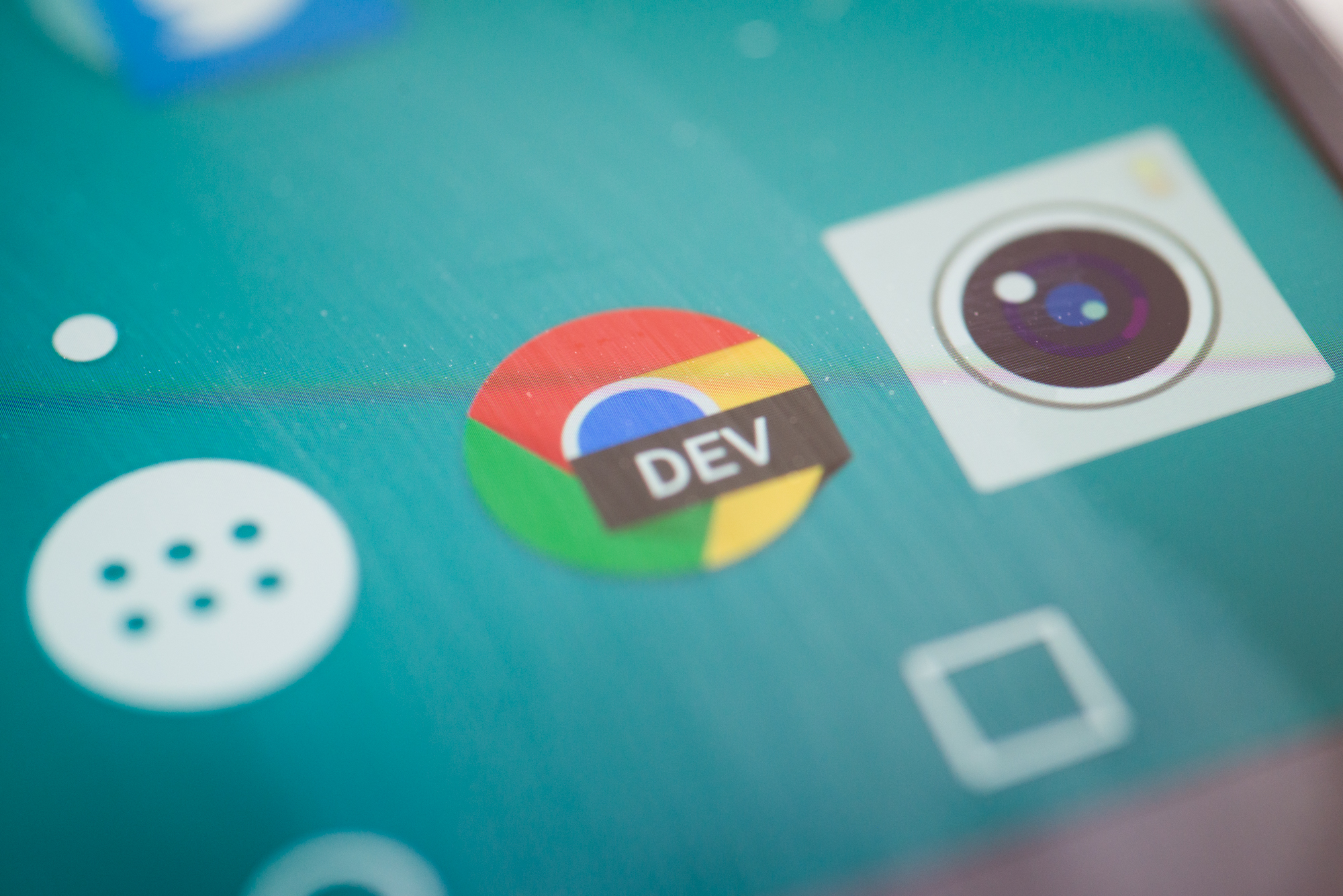
Display
The G4 has a display the same size and resolution as its predecessor, but that’s like saying a sloth and a cheetah both possess legs. They are immensely different, both in the way they convey colour to the dramatic change in text rendering, brightness, colour accuracy and efficiency.
I didn’t shy away from exposing and criticizing the flaws in the G3’s QHD panel, a resolution that didn’t seem ready for the masses when the phone was released in mid-2014. A year later, costs have dropped and quality has risen, and the G4 boasts one of the nicest, if not the nicest, screens in the world. Sharp, of course, but the device has excellent colour reproduction, helped in no small part by LG’s DCI certification, the same exacting standards that movie theatre projectors are required to meet when showing the world’s top films.
Marketing gimmickry aside, this DCI certification means little to you, the end user, but to me it means that LG is topping itself not according to some self-imposed standards but those of an outside body, one that ensures the fidelity of some of the most expensive displays on earth.
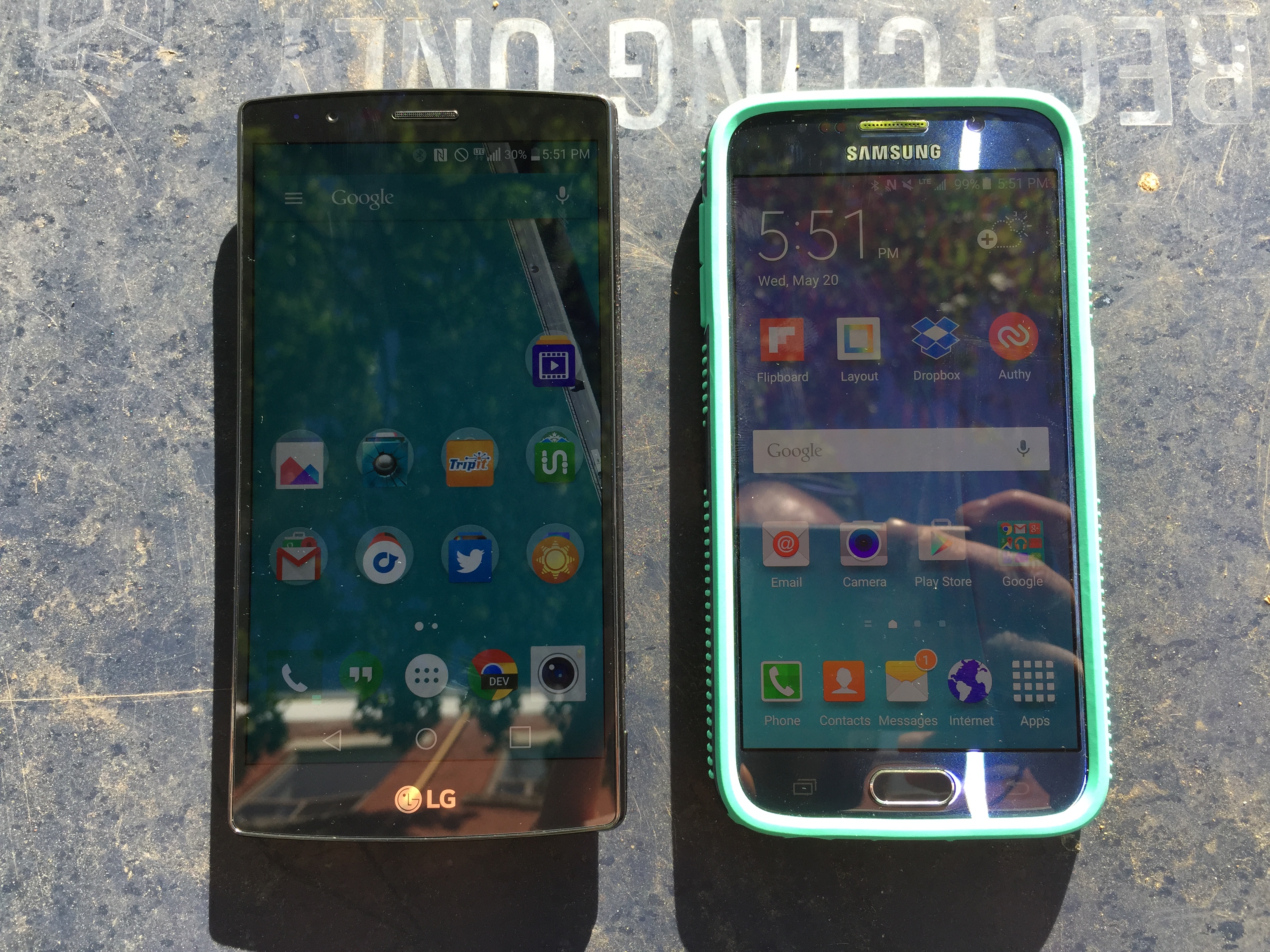
LG boasts outdoor visibility 25% better than that of the G3, but all I care about is whether I can use the thing on a blazing summer day. The answer to that, and most other displays, is still “sort of,” but it’s two things: better than everything else out there; and not as good as the Galaxy S6, which holds the brightness record.
At this point, when comparing mobile screens like the G4 and S6, we’re mainly making qualitative statements based on opinion. For example, the S6 is some 9% sharper than the G4. In the real world, that is nothing but a checkbox on a marketing sheet, a way for salespeople to sell “the sharpest phone on earth.” The G4’s screen is amply dense and plainly beautiful. It gets the job done in but the most extreme situations, and does it without eating into battery. From my perspective, that’s about as good a result as one can ask for.

Design
There’s something to be said for subtlety. Despite at first glance appearing nearly identical to its predecessor, the G4 differentiates itself in meaningful ways while staying true to an aesthetic that, while divisive, is by now cooly owned.
Unlike the pronounced curve of the G Flex 2, the 5.5-inch G4 dips imperceptibly from top to bottom, making it easier to grip and more comfortable to rest against the face. The side bezel is slightly wider, too, further enhancing the comfort in the hands. Being taller than the G3 is my only criticism here, as the phone is slightly too tall for one-handed use, but the improved screen makes up for it.
This year, the G4 is all about the leather back, and despite only having one of the colours available here in Canada, it’s well worth the investment. First, let’s talk about the default backing, a slightly darker variant of last year’s plastic enclosure. It’s not bad, with its repeating diamond texture that shimmers in the light, but the black leather is just so much nicer.
I’m a sucker for good quality leather, and LG made sure it got the process right. Vegetable treated so it will last longer, the colour won’t fade, and any wear and tear will settle in, not stand out. And though it is replaceable, once affixed the back cover looks to be of a single origin; LG spent a long time making sure the seams don’t show.

The rear volume and power keys are improved this year, too, and the latter juts out just enough to distinguishable without looking. It took them a couple of years, but LG finally got the combination right. Don’t forget the beautifully-etched G4 logo on the bottom right of the leather casing; touches like these add a decidedly premium feel to a well-groomed smartphone.
Along with the keys are the 16MP camera sensor, an improved-over-last-year autofocus laser and a dual LED flash. The rear-facing speaker, one of the poorest showings on the phone, is located near the bottom left.
Despite being made of plastic, LG has made one of the nicer large Android phones on the market. It’s personal taste whether one will prefer it over the Samsung Galaxy S6 – I don’t, but I can also see the virtue in its modularity – but the larger screen and removable battery shouldn’t be the reason to buy the G4 over its nearest competitor. Buy it because you love its cigars-and-fireplace design over the cold exactness of Samsung’s latest flagship. Don’t scope it because it has expandable storage. But, hey, that’s just one man’s opinion.

Performance
There’s something to be said for second place. LG rightfully made the decision to ship the G4 not with Qualcomm’s fastest chip but its second-fastest, a derivative of the Snapdragon 810 called the Snapdragon 808, which features the same fundamentals with two high-speed Cortex-A57 cores omitted.
In daily use, the G4 screams, but no louder than the HTC One M9, the only other device I’ve used with the Snapdragon 810 at any great length. That the G4 runs Android 5.1, the first I’ve seen apart from the Nexus 6, also helps, but the company’s defensive position in the face of perplexed fans and skeptical press shouldn’t have been necessary; the Snapdragon 808 performs nearly as well as the 810 in synthetic benchmarks, and even better in some regards.
That’s due to the lower heat output of the six-core SoC, whereas the Snapdragon 810’s eight cores tend to speed up, sputter and throttle down so as not to overheat.

Most reviewers have echoed this sentiment, that one loses nothing going from the Snapdragon 810 to the 808, but I must point out that the claims of LG “working with Qualcomm” to produce a specialized version of the 808 is nonsense. This is absolutely a problem for Qualcomm, and OEMs like HTC, LG, Sony and others are bearing the brunt of the impact. Qualcomm, faced with a 64-bit arms race against Apple and Samsung, produced a subpar product, period. The Snapdragon 808 is a well-performing chip in spite of Qualcomm’s ham-fisted 2015 product strategy, and the drama behind the scenes is, thankfully, invisible to the user.
I’m more interested in how a phone performs over how it scores, and the G4 doesn’t quite match the sheer fluidity of the Galaxy S6. Whether it’s Samsung’s toned-down TouchWiz (unlikely) or the peppy verisimilitude of its Exynos processor (more likely), the Galaxy S6 and even the Snapdragon 810-toting HTC One M9 feel minutely superior to the G4 in areas like app loading and general responsiveness, but the delta is so small as to be barely worth mentioning. The G4 performs like a flagship.
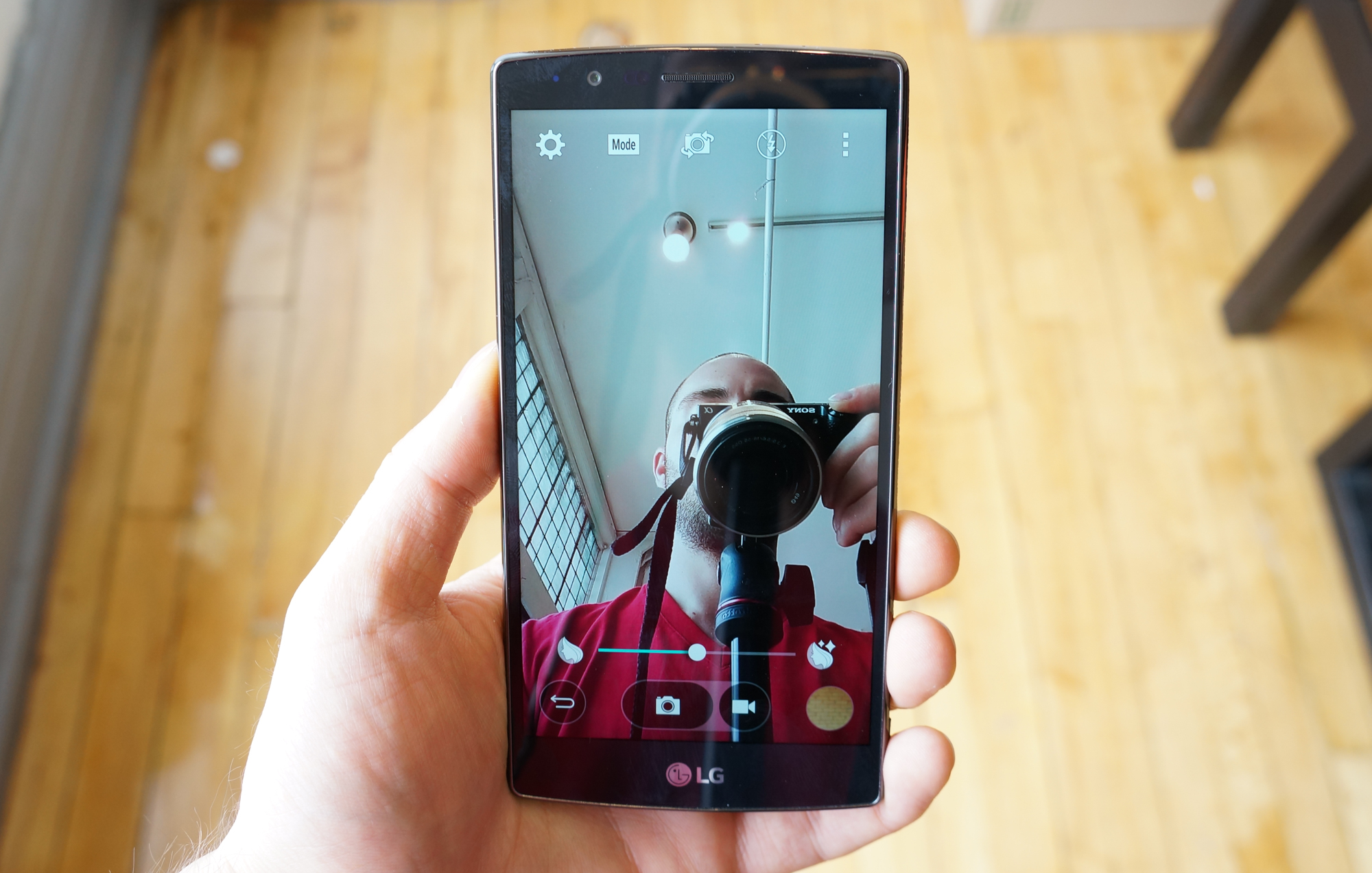
Camera
Much of the G4’s prowess has been centered around its camera, and for good reason. Its 16MP sensor and F1.8 lens are big upgrades from last year, but the takeaway is that, as with the Galaxy S6 (and unlike the LG G3), it is able to quickly capture great photos in most situations.
First, let’s talk about the sensor. It is the same 1/2.6″ size as the Galaxy S6’s, the same resolution, at 16MP, the same aspect ratio, at 16:9, and similarly optically stabilized. The sensors tend to capture images differently, with the G4 tending to be a little colder, but both are beyond anything we’ve seen on Android to date. LG promises tone accuracy and better IQ, owing to an ability to capture true colour and reflected colour from the surrounding scenes. What sounds like a bunch of jargon can be translated into: the G4 tends to expose high-contrast scenes better than most other cameras, even without HDR. It’s not perfect, but it’s excellent most of the time.

The other aspect to talk about is the lens, which, at f/1.8 makes it one of the widest we’ve seen in a smartphone. However, one cannot talk about wide, fast, sharp lenses in a smartphone the way we can on an SLR, since there just isn’t enough room between the layers of glass to make a demonstrable difference. I can tell you that the G4 captures some lovely photos, day or night, and that the depth of field is pronounced, even more so than on the S6. And like that Samsung phone, it’s going to be one of those “love it or hate it” scenarios.
The G4’s camera performance tends to shine when one takes a moment to work out its strengths. HDR isn’t quite as robust as on the iPhone 6 or Galaxy S6, but because it’s a better arbiter of dynamic range anyway, that doesn’t usually matter. Low-light photos are noticeably improved over the iPhone 6, and produces photos with better white balance than the Galaxy S6, though the latter has an edge when it comes to resolving subjects.
LG has implemented a fantastic camera app, with the kinds of manual controls professional photographers dream about. Not only can light sensitivity (ISO) be changed up to 2700, but shutter speed can be manipulated all the way down to 30-seconds, and up to 1/6000. With a tripod, this smartphone camera can shine. The phone also supports RAW, captured using the widely-accepted DMG format, but there are some severe issues with the output, so unless you absolutely need I’d recommend staying away. You can’t edit RAW files on the camera, either, due to memory bandwidth limits.
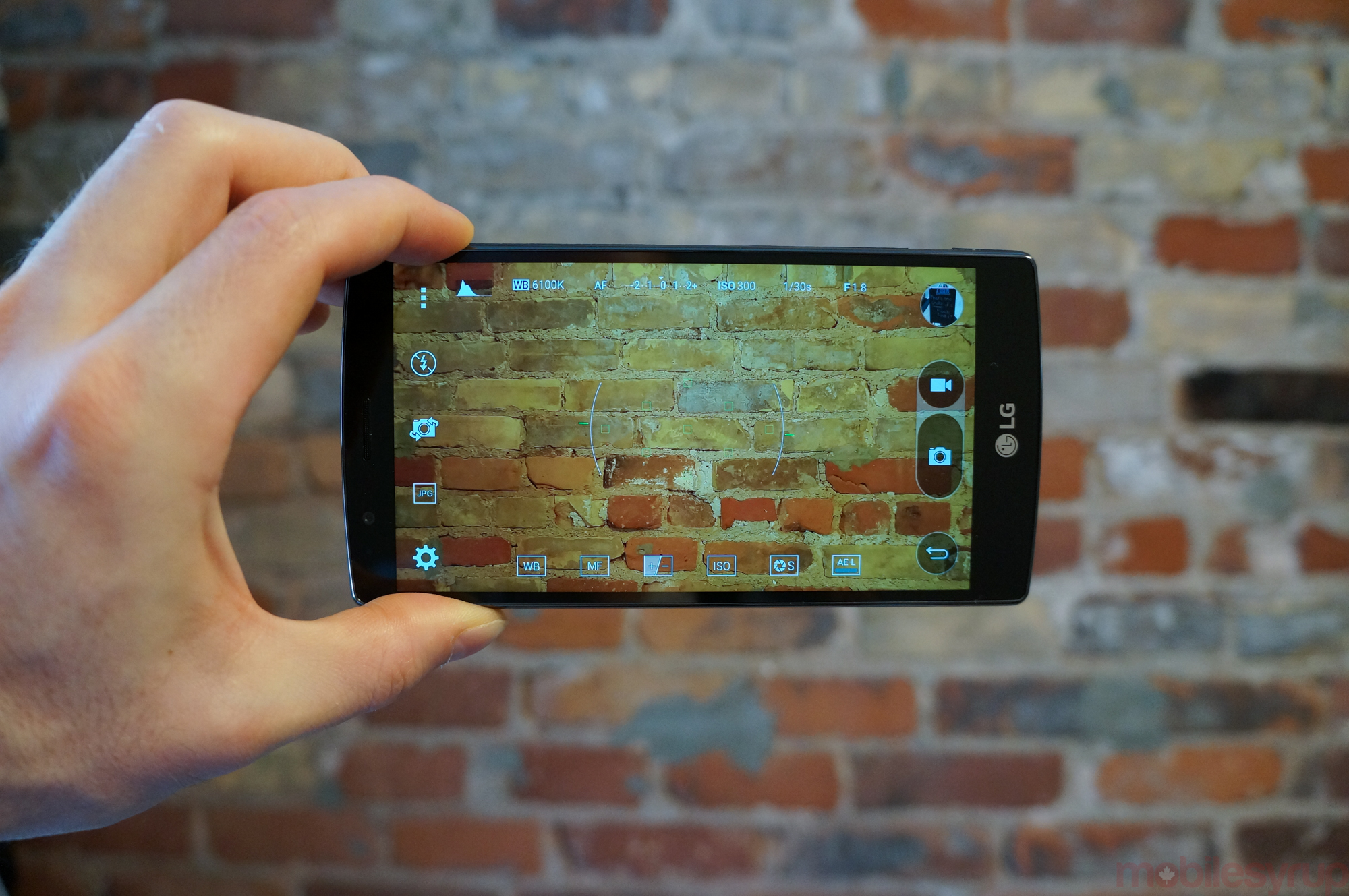
Like the Galaxy S6, the G4 has a quick-shoot shortcut, though it’s not quite as convenient. Double tapping the volume down button on the phone’s rear opens the app and takes a photo in 0.6 seconds, which is ever-so-slightly faster than the S6, but the fact that it’s on the back makes it difficult to properly frame a shot in time.
The shortcut is also only accessible when the phone is off, or on the lock screen, which isn’t particularly useful when actually using the phone.
On the video front, the G4 supports 4K video at 30fps, and thanks to an optically-stabilized sensor, the results are pretty darn good. In fact, outside of the iPhone 6 Plus, it’s one of the better smartphones for video currently available. The only problem is the microphone is quite noisy, so I’d have an external mic if audio is a priority.

Software
The Android 5.1 build on the LG G4 is good, and a significant upgrade over the inconsistent tripe found on the G3. LG has more thoughtfully implemented elements from Material Design, and has made Lollipop’s idiosyncrasies, like the Interruptions toggle, more accessible to the average user.
The device is the first outside of the Nexus lineup to run Android 5.1 out of the box, too, and much of the phone’s sprightliness can be attributed to Google’s major performance improvements.
Like last year’s model, LG includes a number of apps and services of questionable utility, but I never found they overshadowed the core experience. For starters, the launcher looks and feels a lot more like Google Now, but instead of Google Now itself resting in the left-most home screen, LG’s own Smart Notice divulges small snippets of information, like weather, upcoming calendar appointments and health data from the phone’s myriad sensors. None of this is unique, but LG’s spin is, dare I say, attractive and inoffensive.
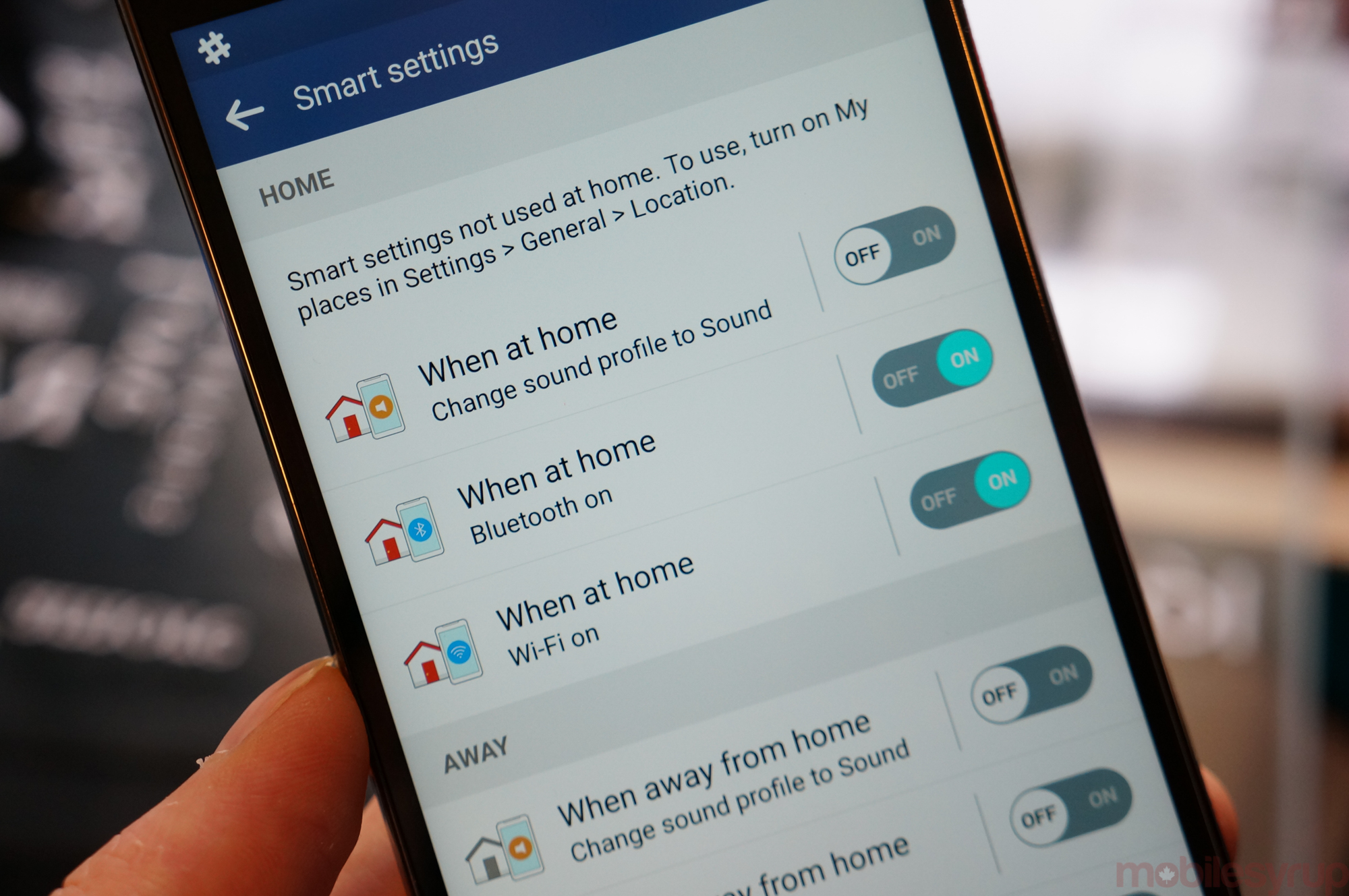
An area of wasted potential in the G4’s software is in Smart Settings, which use context to trigger an action. Want Spotify to open every time you plug in a pair of headphones? Smart Settings can do that. And it works, most of the time. But because there are so many services, like Tasker and the less technically-involved IFTTT, LG’s clunky implementation leaves a lot to be desired.
Elsewhere, LG dips its toes into productivity with its QSlide app, which hasn’t evolved much since it debuted on the original Optimus G, and LG Health, which is little more than a portal for counting steps and providing facile pieces of canned encouragement.
And while I haven’t played with the Canadian retail model just yet, the Korean version I used had McAfee Antivirus pre-installed on the device that could neither be uninstalled nor removed. For shame, LG.

Battery Life & Connectivity
The removable battery inside the LG G4 is going to please a lot of enthusiasts, but the phone has good enough battery life to negate the need for a second one.
Like last year’s G3, the G4 sports a removable 3,000mAh cell (though the two are not interchangeable), with Fast Charging support that brings the device from zero to 50% charge in around 30 minutes.
By the end of a pretty busy day, the G4 was generally just below 30%, though it occasionally reached under 10%, which prompted me to turn on Battery Saver Mode.
Call quality was generally good over the Bell network (I used an unlocked Korean variant of the phone, and tested it mainly on Bell, and for a short time on Rogers), though the rear speaker was tinny and really unpleasant to listen to. Headphone quality, on the other hand, was incredible and clean, thanks for a very strong amplifier.
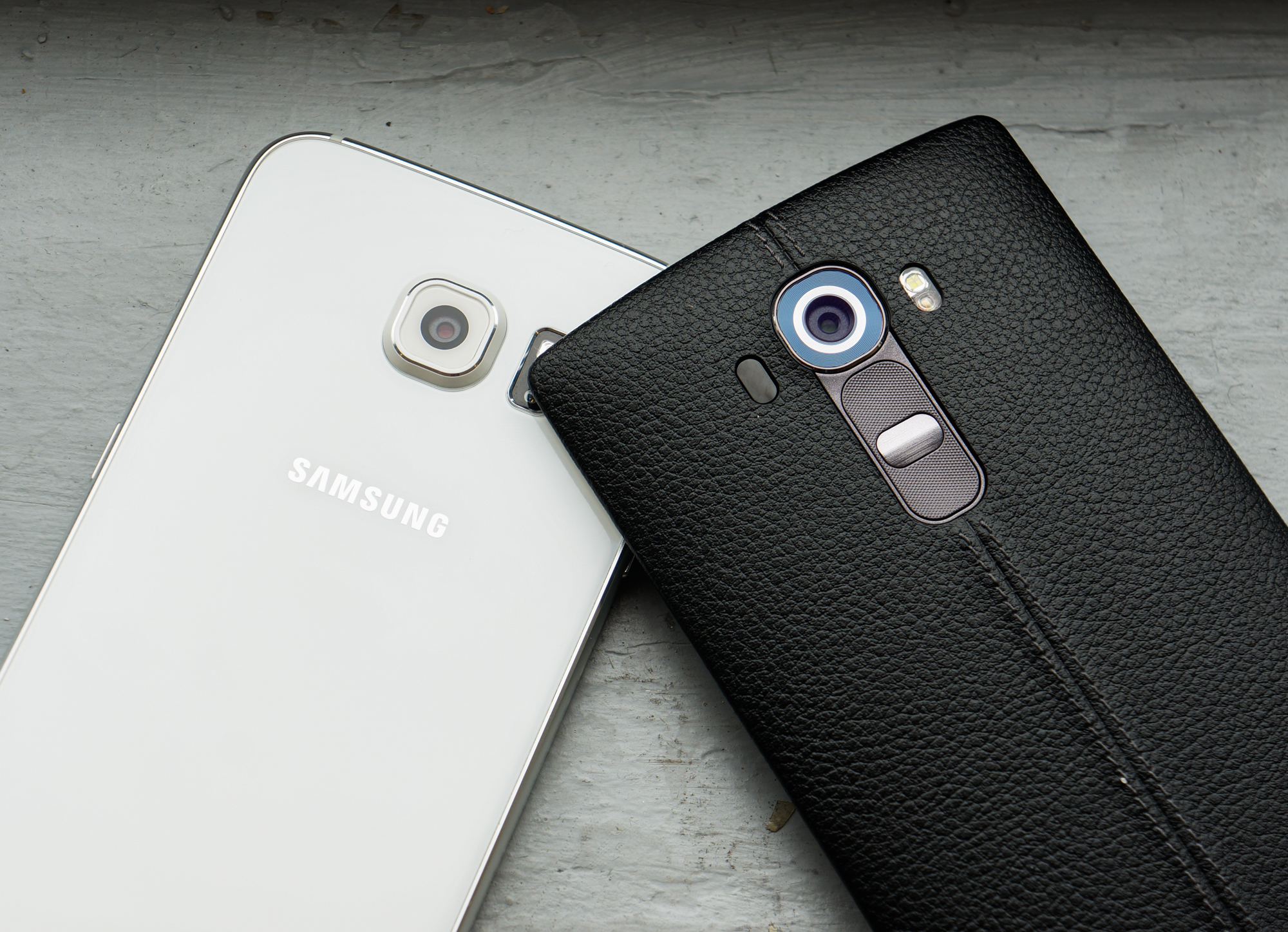
Competition
The LG G4 is up against some pretty steep competition, and doesn’t do itself many favours by being very similar, at least outwardly, to its predecessor, which is still sold on the Canadian market.
Last year, the G3 had an edge over the Galaxy S5 by having a higher-resolution screen and more internal storage; this year, the displays are similar in quality, and the G4 can only claim the addition of a microSD slot. Its leather option is going to appeal to a certain subset of users, but there’s no question the small, thin and strong frame of the Galaxy S6 is going to turn more heads than this one.
The HTC One M9 is also a great option to someone who wants a smaller, better made device, where camera quality isn’t paramount; the M9 is slightly faster than the G4, with similar battery life and a beautiful, albeit lower-resolution, screen. Its software is also far better, as is HTC’s update track record.
Indeed, LG has to step up its update game if it’s going to win over the loyalty of its users. It just came to light that the company doesn’t plan to update its 20 month-old G2 to Lollipop in Canada, which is a big blow to a large user base. Contrast that decision with Samsung’s well-kept Galaxy S4 and HTC’s still-spunky One M7, and you have some big operational concerns.
Similarly, LG must compete with larger devices like the OnePlus One and Asus ZenFone 2, both excellent phones with only slightly diminished specs but a price less than half the G4’s.
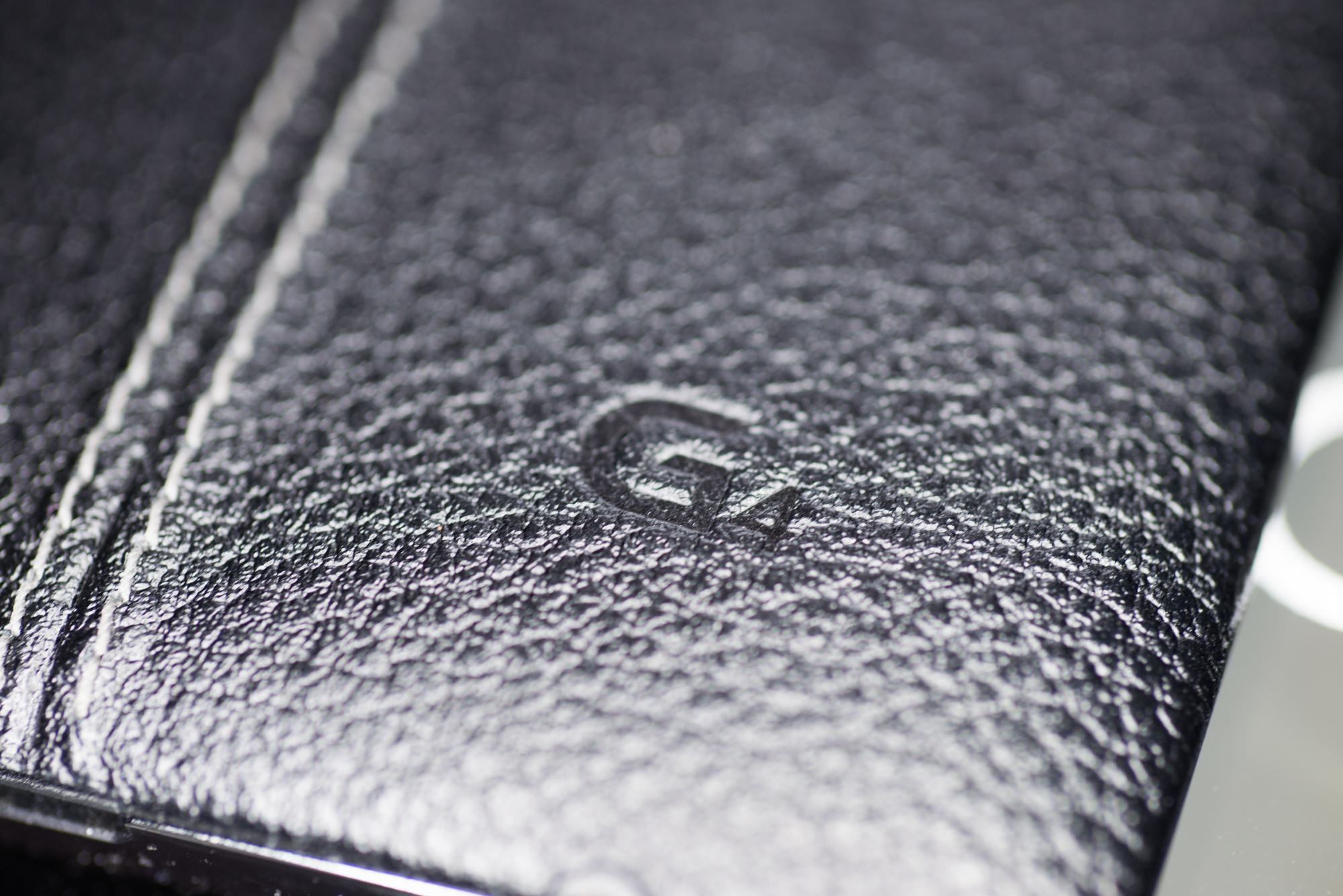
Conclusion
There’s a lot to like about the LG G4. It’s fast and functional, with a great screen and even better camera.
Its shape, size and general look may not be to everyone’s tastes, but in its utilitarianism there is a case for owning something that just works. Its excellent battery life and unadorned software, a million miles from where LG’s designers were just two years ago, are also encouraging.
To many, the LG G4 will be the perfect Android phone: large, bright and sharply-dressed; powerful, sleek and long-lasting. It lacks the wireless charging of the Galaxy S6 and waterproofing of the Xperia Z3, but otherwise there aren’t a lot of places to criticize it.
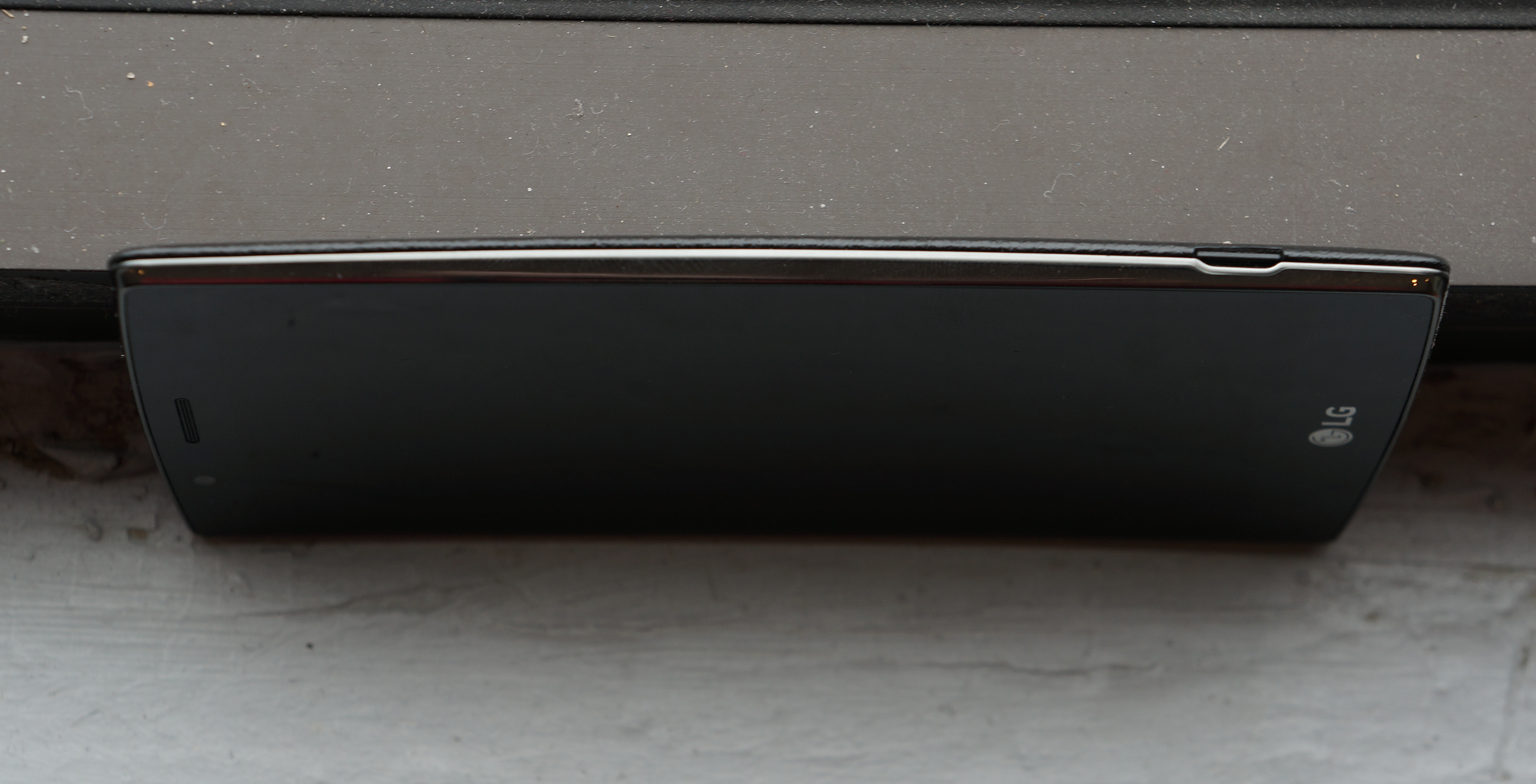
Pros
- Excellent camera
- Great battery life
- Good performance
- Nicely-designed UI
- Leather backing is sharp
- Removable battery and expandable storage
- Comfortable to hold
Cons
- Plastic sides feel cheap
- A few software slowdowns
- LG has poor history of software updates
MobileSyrup may earn a commission from purchases made via our links, which helps fund the journalism we provide free on our website. These links do not influence our editorial content. Support us here.

